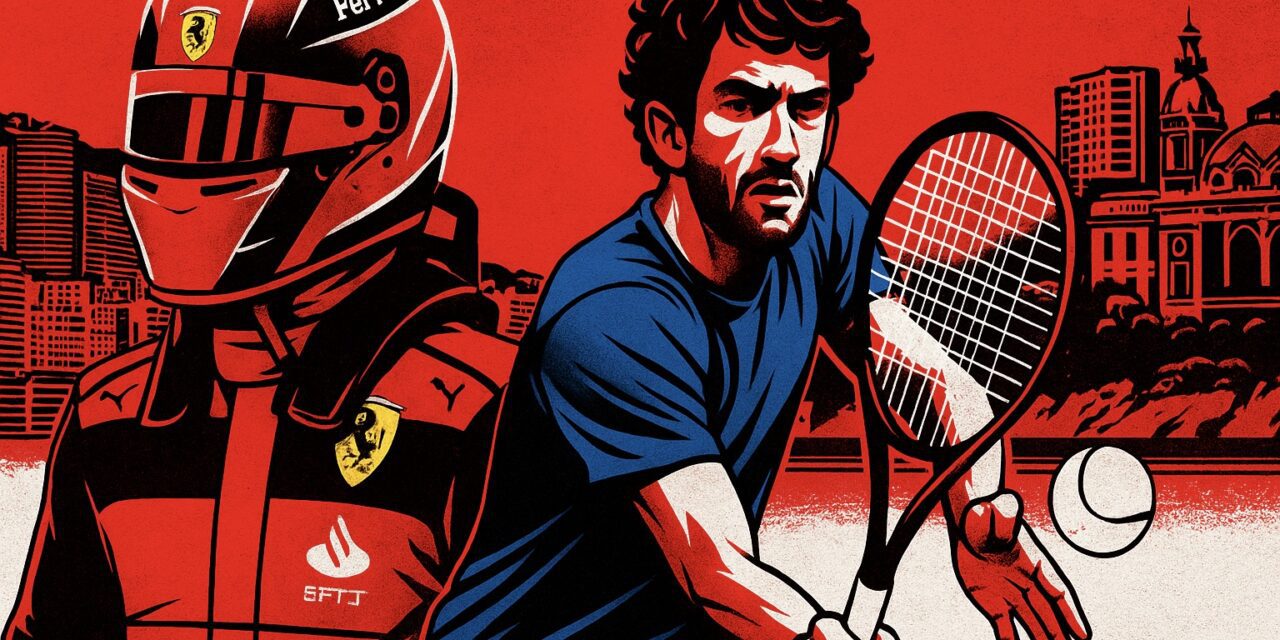Monaco may be the second smallest country on Earth, but when it comes to sporting impact, it punches like a heavyweight. With fewer than 10,000 Monégasque citizens, this glittering enclave wedged between France and the Mediterranean somehow keeps producing athletes who compete and win at the very highest level. Charles Leclerc’s exploits in Formula 1 have already made him a global star, and now tennis player Valentin Vacherot has stunned the sporting world by winning the Shanghai Masters, Monaco’s first ATP singles title. For a country where the entire native population could barely fill a small football stadium, the numbers are almost absurd.
According to official figures, Monaco has just under 9,900 Monégasque nationals and around 38,000 residents in total. That means the nation’s citizen base could fit comfortably into a single city block in Paris or London. Yet from that microscopic pool has emerged not one but multiple world-class athletes competing at the pinnacle of international sport. Most nations with populations in the tens of millions struggle to produce household names on the Formula 1 grid or on the ATP Tour. Monaco, with the population of a small village, has managed both. Statistically, that’s sporting alchemy.
Valentin Vacherot’s rise captures just how extraordinary this is. Ranked outside the world’s top 200 going into the 2025 Shanghai Masters, the 26-year-old fought through qualifying before embarking on one of the most improbable title runs in recent tennis history. He took down top-seeded players including Holger Rune and Novak Djokovic, then defeated his cousin Arthur Rinderknech 4-6, 6-3, 6-3 in the final. The victory made him the lowest-ranked player ever to win a Masters 1000 event since the series began in 1990, catapulting him into the world’s top 40 and turning him into an instant national hero.
For Monaco, Vacherot’s breakthrough echoes the success of Leclerc, the prodigious Ferrari driver who has carried the Principality’s flag around the world since his Formula 1 debut. Leclerc grew up on the same streets that stage the world’s most famous Grand Prix and has since become one of the sport’s leading figures, earning wins, poles, and a reputation as one of racing’s elite talents. Between Leclerc on the circuit and Vacherot on the court, Monaco’s red-and-white flag has become an unlikely fixture on podiums far larger nations dream of reaching.
So how does a place this small achieve something so big? Resources help, of course. Monaco’s wealth ensures access to world-class facilities, coaching, and competition. Its proximity to France and Italy opens pathways to top academies and leagues. But that’s only part of the story. Monaco’s approach to sport is one of precision and focus rather than scale. With such a small population, the emphasis naturally falls on developing individual excellence, nurturing talent early, and providing the kind of personal attention impossible in larger systems. Every promising athlete becomes a national project.
There’s also the motivational factor. In Monaco, success is magnified a hundredfold. When Leclerc wins a race or Vacherot lifts a trophy, it resonates through every corner of the Principality. Those achievements inspire the next generation, and remind the rest of the sporting world that greatness isn’t a question of numbers.
In pure statistical terms, Monaco’s sporting output is nothing short of outrageous. A nation of under 10,000 native citizens producing multiple globally elite athletes would be unthinkable anywhere else. Yet in the Principality, it’s starting to look almost normal. With Charles Leclerc chasing a Formula 1 world title and Valentin Vacherot now among the top names in tennis, Monaco has once again proved that size has nothing to do with sporting power. The Principality might be tiny, but in the world of sport, it stands far taller than most.


